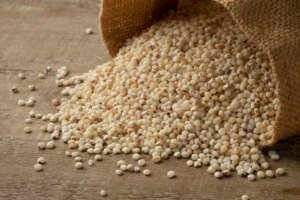Frozen shoulder, medically known as adhesive capsulitis, is a condition marked by pain, stiffness, and restricted shoulder movement. This condition can make everyday tasks such as dressing, reaching, or driving a struggle. While physical therapy and stretching are widely recommended for restoring shoulder mobility, the importance of proper nutrition—particularly calcium—remains underestimated. Combining targeted stretches with a calcium-rich diet can provide a comprehensive and effective approach to recovery.

Understanding Frozen Shoulder: Key Stages and Symptoms
Frozen shoulder progresses through three distinct stages:
- Freezing Stage: Pain and inflammation gradually limit shoulder movement.
- Frozen Stage: Stiffness becomes more pronounced, further restricting mobility.
- Thawing Stage: Slow recovery of motion occurs over months or even years.
Given this lengthy recovery process, integrating proactive measures, including dietary and exercise strategies, is essential.
Why Calcium Is Vital for Frozen Shoulder Recovery

Calcium plays a critical role in maintaining bone strength, cartilage health, and muscle function, all of which are crucial for rehabilitating a frozen shoulder. Here’s how calcium contributes:
- Bone Health: Calcium maintains the strength of bones like the humerus, clavicle, and scapula, which support shoulder movement.
- Muscle Function: Adequate calcium levels improve muscle contractions and reduce spasms, which are common in cases of limited mobility.
- Cartilage Protection: Calcium supports cartilage health, reducing joint friction and irritation.
The Role of Stretching in Recovery
Stretching is a cornerstone of frozen shoulder treatment, enhancing flexibility, reducing stiffness, and restoring the shoulder’s range of motion. Stretching also promotes blood circulation, aiding in tissue repair.
Effective Stretches for Frozen Shoulder Recovery

- Pendulum Stretch: Lean forward and let your affected arm dangle. Swing it gently in small circles, increasing the range over time.
- Towel Stretch: Use a towel behind your back to pull your affected arm upward with the help of your other arm.
- Cross-Body Stretch: Use your unaffected arm to lift the affected arm across your body, holding for 15-30 seconds.
- Wall Climb: Walk your fingers up a wall to gently stretch your shoulder.
Daily stretching, performed consistently, can lead to gradual improvements in mobility.
Combining Calcium and Stretching for Effective Recovery
The synergy between calcium intake and stretching enhances the healing process:
- Post-Stretch Recovery: Calcium-rich foods aid muscle recovery after stretching exercises.
- Cartilage Health: Calcium supports cartilage integrity, complementing stretching to reduce joint friction.
- Improved Nutrient Transport: Increased circulation from stretching enhances calcium delivery to the affected joint. Staying hydrated boosts these benefits further.
Best Foods for Calcium Intake

Incorporating calcium-rich foods can accelerate recovery:
- Dairy Products: Milk, yogurt, and cheese provide easily absorbable calcium.
- Leafy Greens: Spinach, kale, and collard greens are excellent plant-based options.
- Millets: These grains contain 8-13 mg of calcium per 100 grams, depending on the variety.
- Fortified Foods: Calcium-fortified plant-based milk, cereals, and juices are great alternatives.
- Almonds: A nutritious snack packed with calcium and healthy fats.
- Sardines: These fish, especially when canned with bones, are rich in calcium and omega-3 fatty acids.
Don’t Forget Vitamin D
Calcium absorption depends on adequate vitamin D levels. Spend time in sunlight or include vitamin D-rich foods like egg yolks, fatty fish, and fortified products in your diet. For those with limited sun exposure, supplements may be necessary.
Evidence-Based Benefits of a Holistic Approach
Research shows that combining physical therapy with nutritional changes, such as increased calcium and vitamin D intake, leads to better outcomes in frozen shoulder recovery. This approach supports tissue repair, reduces inflammation, and strengthens joints for long-term health.
Final Thoughts
Recovering from a frozen shoulder requires a blend of patience and proactive effort. Incorporating calcium-rich foods into your diet and committing to daily stretching exercises can make a significant difference. Consult healthcare professionals to customize your recovery plan and take steps toward a pain-free, mobile shoulder. With dedication, you can regain strength and flexibility and improve your quality of life.
References
- Giraldo-Vallejo JE, et al. “Nutritional Strategies in the Rehabilitation of Musculoskeletal Injuries.” Nutrients, 2023.
- Chan HBY, et al. “Physical Therapy in the Management of Frozen Shoulder.” Singapore Medical Journal, 2021.


